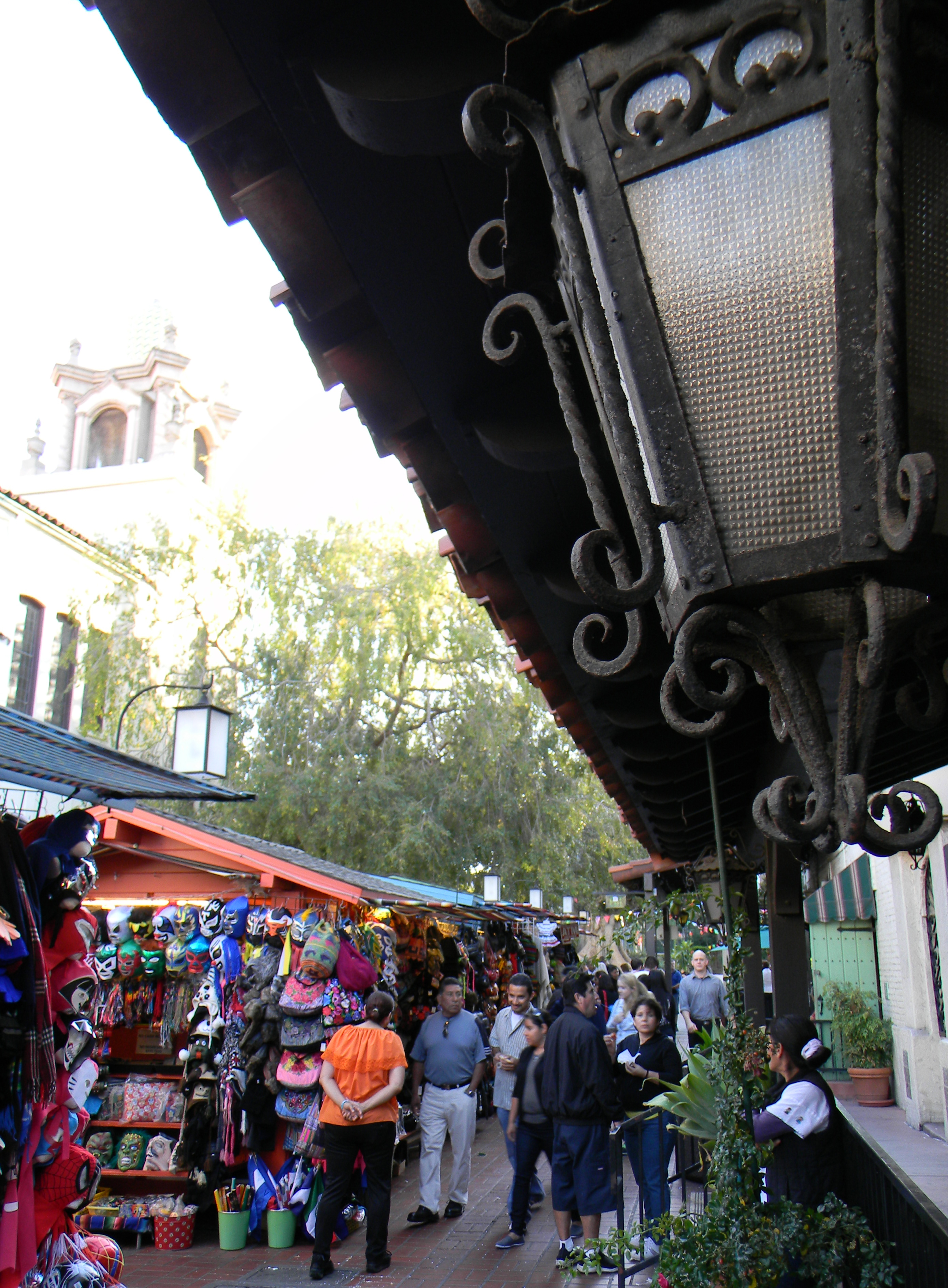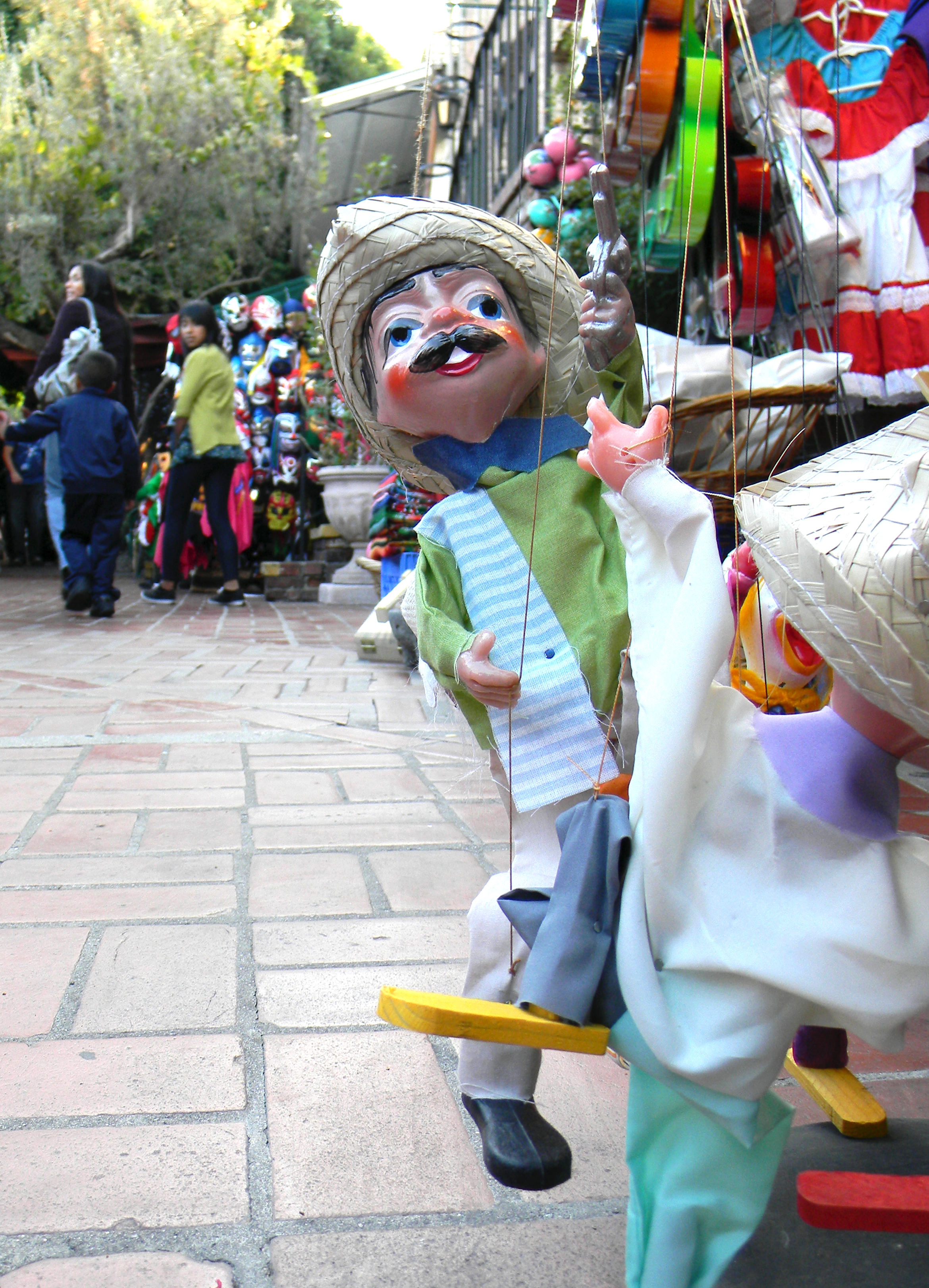
Olvera Street in downtown Los Angeles is home to dozens of Mexican candy kiosks, food vendors and specialty shops.

Graphic reporting by Lauren Roberts
Potent aromas of leather and cinnamon churros waft through the wooden stalls of Olvera Street’s marketplace.
The worn brick lane is home to dozens of Mexican candy kiosks, food vendors and specialty shops decorated in an eternal fiesta of intricately cut green, red and white papel picado banners. Shops line the street selling everything from sugar-coated candy skulls to string puppets and pocket saints.
And on weekends, the street bustles with families, live music and elaborately costumed Aztec dance performances.
Though the festive atmosphere is far more touristy than authentic, Olvera Street is not without its share of rich history.
The marketplace is located in the oldest district of downtown Los Angeles at the intersection of El Pueblo de Los Angeles State Historic Park, a plaza that houses several historical monuments built prior to California statehood.
Among them is the oldest standing house in the city ““ the Avila Adobe, which was built in 1818 by wealthy cattle rancher Don Francisco Avila. Avila later became the alcalde, or mayor, of Los Angeles.
Tucked along the restaurants and shops of Olvera Street, the adobe is nearly hidden from plain view, draped in fuchsia flowers and guarded by twisted tree branches.
Today, the adobe is refurbished to reflect how it may have looked at the height of Avila’s ranchero days in the 1840s. While much of the home is furnished in replica furniture, certain dark wood fixtures are the same heirlooms belonging to Avila’s family. In the master bedroom, a 17th century Italian chest of drawers stands next to the white drapes of a carved canopy bed, providing a glimpse of what luxury may have looked like for Los Angeles’ original wealthy residents.
Self-guided tours through the home’s insulated, thick walls of cool adobe brick provide glances of the home’s 19th century kitchen, parlor, office, dining and living rooms.
The home’s preservation can be attributed to Los Angeles resident Christine Sterling, who purchased the adobe in 1926 to save from demolishing. She founded Olvera Street not long after in 1930 in an effort to preserve the area’s Mexican culture.
However, Sterling’s choices in preservation were not without condition.
Just across from the adobe, mural restoration by the J. Paul Getty Trust is underway for the 1932 David Alfaro Siqueiros mural “La América Tropical,” which Sterling ordered whitewashed and painted over not long after its creation. The 18 by 80 foot mural is a modern layer in Olvera Street’s history, which sparked political controversy for its depiction of a Native American martyred at the hands of an American eagle.
Though the mural is currently guarded from view behind wood panels, the six-year restoration project is set to be completed and unveiled between 2012 and 2013, offering a rare example of Siqueiros’ work in the U.S.
A venture through Olvera Street’s crowded storefronts and knickknacks offers an unlikely dose of some of Los Angeles’ earliest history that remains vivid, even amid tourists wielding guidebooks.
Email Roberts at
lroberts@media.ucla.edu if you like uncovering Los Angeles’ historical secrets.
“Artscapes” runs every Wednesday.
